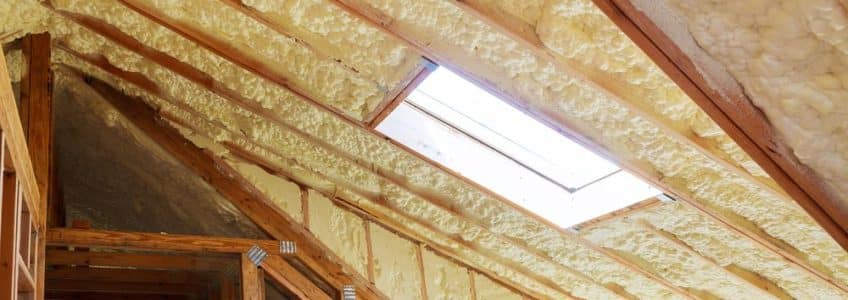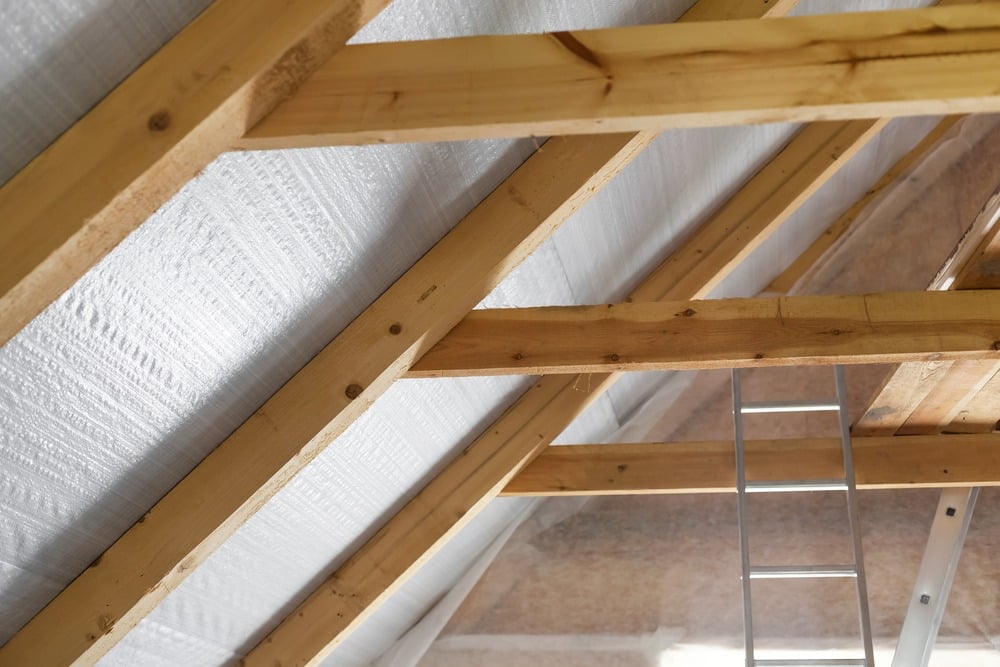
High levels of humidity can cause damage to your home, especially if humidity pools in your attic. It’s a phenomenon that can happen if warm air rises and causes condensation to appear in your attic. Let’s take a closer look at attic condensation and how you can address this issue.
What Causes Attic Condensation?
Air can carry more water molecules when its temperature rises. If warm air cools down quickly, it loses its ability to carry moisture and will release water droplets. This natural phenomenon is what causes condensation to appear when warm air comes in contact with a cool surface that lowers its temperature quickly.
In the wintertime, the warm air from your heating vents will often rise into the attic where it comes in contact with cool air from the outside. Attic condensation will form, leading to humidity issues.
A few conditions have to be present for attic condensation to happen.
Humidity Levels

A roof leak or clogged gutter system can also cause humidity problems. Blocked soffits and vents can reduce ventilation in the attic, making it difficult for humid insulation to dry.
Warm Air Rising
Warm air has a lower density, which causes it to rise. In a home with a healthy insulation envelope, the amount of warm air coming out of your heating vents and rising to the attic should be minimal.
However, homes often have small leaks and cracks that let air into the attic. A lack of insulation will also cause air transfer with the attic.
Cold Attic
Attic condensation is the result of warm air coming in contact with cold surfaces. It’s normal for the temperature in your attic to be lower compared to the rest of your home, but some factors can cause an excessively cold attic that results in condensation and humid insulation.
Leaks in your home’s envelope can let cold air in. These leaks can include holes and cracks in your roof, damaged flashing seals, or leaks around your vents.
Insufficient insulation, damaged insulation, or poorly distributed insulation will also let cold air in and result in higher energy bills.
How Attic Condensation Damages Your Home
Attic condensation will not immediately cause damage, but humid insulation in your attic can cause problems to appear over the years.
Roofing Issues
A roof can weigh anywhere from two to ten pounds per square foot depending on the roofing material. It requires a sturdy structure with rafters and trusses to support it.
These rafters and trusses are typically pine, cedar, or spruce beams. Pine and cedar contain enough resin to resist humidity, but spruce can rot quickly. Over the years, pine and cedar beams will also develop structural issues, without mentioning metal nails that can rust.
Attic condensation can cause damage to the structure that supports the roof. Some sections will develop leaks or even cave in.
Mold
Decaying wood and humid insulation is the perfect environment for mold to grow. Mold spores can spread quickly throughout your home if there are small leaks that you didn’t seal. Mold can damage your roof, ceilings, and walls. Breathing the spores in is also a health risk.
How to Prevent Attic Condensation
There are steps you can take to prevent attic condensation, fix air leaks, and create a tight seal for your home.
- Start by improving the insulation in your attic. You should replace old and damaged insulation and increase the R-value if needed.
- Blown-in insulation can help create a tight seal. A contractor can use this product to apply insulation in nooks and crannies.
- Having a proper drainage system installed will help reduce humidity. Install new gutters and seal air leaks to maintain a consistent roof temperature that will prevent ice dams.
- Have an expert inspect your roof to fix small leaks and cracks. Ask them to check the vents and soffits to improve ventilation in your attic.
- Seal the attic floor to limit warm air transfer. Vents and fans need proper sealing.
- Address any humidity problems in your home by sealing doors and windows, fixing plumbing issues, or running a dehumidifier to maintain a humidity level of 30 to 60%.
Fix Attic Condensation with Advantage Construction

If your energy bills are higher than average, your indoor air seems humid, or you can see ice dams on your roof, you probably have attic condensation. Our extensive experience with roofing, insulation, and other construction projects puts us in a unique position to address this issue and create a tight seal for your home.
Contact Advantage Construction today to learn more about fixing attic condensation.
